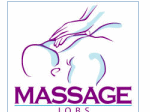Why Setting Massage Therapist-Client Boundaries and Expectations is So Important
When Clients Wants More
When your client wants more: more time, more emotion, more pressure. In other words, navigating the client/patient differential.
In every client/patient relationship there is a differential, that is the space between where you and the client in your relationship. Through our massage education process, many of us are familiar with the clearer lines, for example your client having the right to stop, modify, or change treatment at any point during the session. This line exists in order to protect public health. In most intakes, it is one of the core principals expressed by the massage therapist to the client to try to even the playing field. By the time you have expressed this to your client, you have taken control of the situation as a medical professional in which they are in the more vulnerable situation, and have verbally empowered them by giving them specific rights during the treatment. The reasoning for this is that the therapist who has medical training is often put in control naturally over someone vulnerable because they are in pain or uninformed about the practice. It is in fact a core part of the principal of the Hippocratic oath.
How to Create a Nuturing, Professional Massage Treatment Environment
In most situations, the therapist does indeed hold more power over the client, so it is our job, to stop, inform and educate clients every step of the way, for their own safety, about the choices they have. Informed consent, and the smaller consents you should be using during treatment, remind clients, for their own benefit of their rights before and during treatment. The lesson seems cut and dry. The therapist is in a position of power, and the client is vulnerable; however not all the lines are so clearly drawn. New therapists especially can get confused about navigating some of the more complex client/therapist interactions.
Many situations will arise where your client actually has power over you, and you might not notice them because you are so busy protecting them. In these cases, it is best to have decided how you will handle the situations ahead of time, so that you are prepared to handle them gracefully. One of the most common situations that will arise is that of your client wanting more pressure. More pressure is not always bad, but its not necessarily beneficial either. Be wary of modifying your client's treatment blindly just because it is their right to do so. Somewhere in our public historical massage culture, phrases like I don't think its helping unless it hurts a little' took hold. How and when this idea was born I'm not sure, but it is simply not true. You client may even prefer a very deep pressure that is painful. Be cautious of this, because you have the education to understand the treatment you are giving more fully than your client. There is a tipping point for all treatments when they stop being beneficial and only you can make that choice, because you are the only one in this relationship who has the education to do so. Be prepared to talk to your client about why only going to a certain depth is a viable choice lest you damage the tissue, even though your client might prefer the "feeling" of a deeper massage. It is still their right to stop or modify the treatment because they disagree with you, but at that point you yourself cannot continue. This line may also move... the pressure you would be comfortable using on one person, might not be the same on another, or you might choose a different pressure for someone pre event or post. Remember that you are the medical professional in this relationship.
How to Deal With a Client's Request for a Longer Massage
Another common line that might be difficult to navigate is when your client asks for more time. We have all been there, three minutes until your session is about to end and your clients suddenly springs on you "I forgot to mention..." Once again, preparing what you will say in advance will ensure that you operate as a medical professional in this situation. Sometimes it might be relatively easy to add a few minutes on, or add in one or two things, and you might choose to do this as a professional courtesy if it is a one time event expressed honestly. Here it is essential for your own protection that in your pre-treatment consent, you agreed not only to the "stop, or modify" but laid out a plan of action which included confirming how the treatment time should be spent. These guidelines keep both client and therapist in check, making sure the relationship stays neutral of power. Whether your client means to squeeze out a bit more time or is simply having a good treatment and suddenly remembers something they think might help, when you have already agreed on a plan, you can protect both yourself and the time of the clients by reminding the patient of the plan you had laid out together. If there is time left to modify, you can certainly do that, by saying something like "we have five minutes left. . .how would you like to use that?" By clearly adhering to the timelines and plans that you both make together, you will have a clear line in the sand, where both people feel positive and on equal footing.
Setting the Tone for a Professional Massage Therapist - Patient Relatioship
By far where things can get most confusing is that in the more complex client/patient relationships. Massage differs from many medical professional relationship because of the sheer one-on-one time we spend with clients. It is easy for both parties to lose their place in the dynamic as the relationship develops. If someone has been seeing you once a week for a year, it would be hard not to see them a bit differently than just a patient. You know the name of their family members, their dog and everything that is going on in their lives. Here it is especially important to check in with yourself once in a while to make sure in the end, keep you from having to navigate uncomfortable situations down the road.
Being Prepared is the Key
In the massage profession, deciding how to handle issues before they arise is the key to long stanidng healthy relationshipsnships. Both you, the professional massage therapist and your client will appreciate the ease of the relationship as frequently grey areas are confusing and uncomfortable for both parties... even the one in control.
If you enjoyed this article, please spread the word...
Article written by:
 |
Beret Kirkeby Owner & LMT Body Mechanics Orthopedic Massage New York City, NJ [ Get More Information on Author Beret Kirkeby ] |



